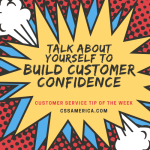
Sometimes I don’t understand people – even my relatives. I was sitting next to my teenage daughter last week, and she was playing on her smart phone. I asked what she was doing, and she said that she had created 22 “flash cards” using an app on her phone, and was quizzing herself for her Biology test.
While it was great that she was studying, I thought to myself, “That was odd. I would have just used actual index cards to make flash cards.”
Over the weekend, I was talking with my father-in-law about his lovely new flip phone, and he was telling me about a discussion he had with the service representative at his Verizon store. My father-in-law had gone into the store to pay his bill.
I thought to myself, “That was odd. I would have just paid my bill online.”
I could have concluded that my daughter’s and father-in-law’s actions were odd, or they could have concluded that my way of doing things was odd. But probably the real answer has nothing to do with oddities.
It has to do with differences – generational differences, yes – but also differences that go beyond ’57 Chevy v. Prius, that go beyond black and white television v. HDTV.
Not everybody is like us. In healthcare, just because the nurse likes to talk and socialize with others doesn’t mean that every patient wants the non-stop conversation. In sports, just because the NASCAR fan loves to camp doesn’t mean that every sports fan will drive 600 miles for an event. In government, just because some residents love having a 311 number to dial for service doesn’t mean that everyone prefers to handle their business on the phone.
When you’re considering how to handle this call, this e-mail, or this guest that’s standing in front of you, don’t assume they are just like you.
Ask enough questions to move from assumption to understanding.
Signup for FREE Tips! Contact Us More Resources for You Visit Our Home Page























